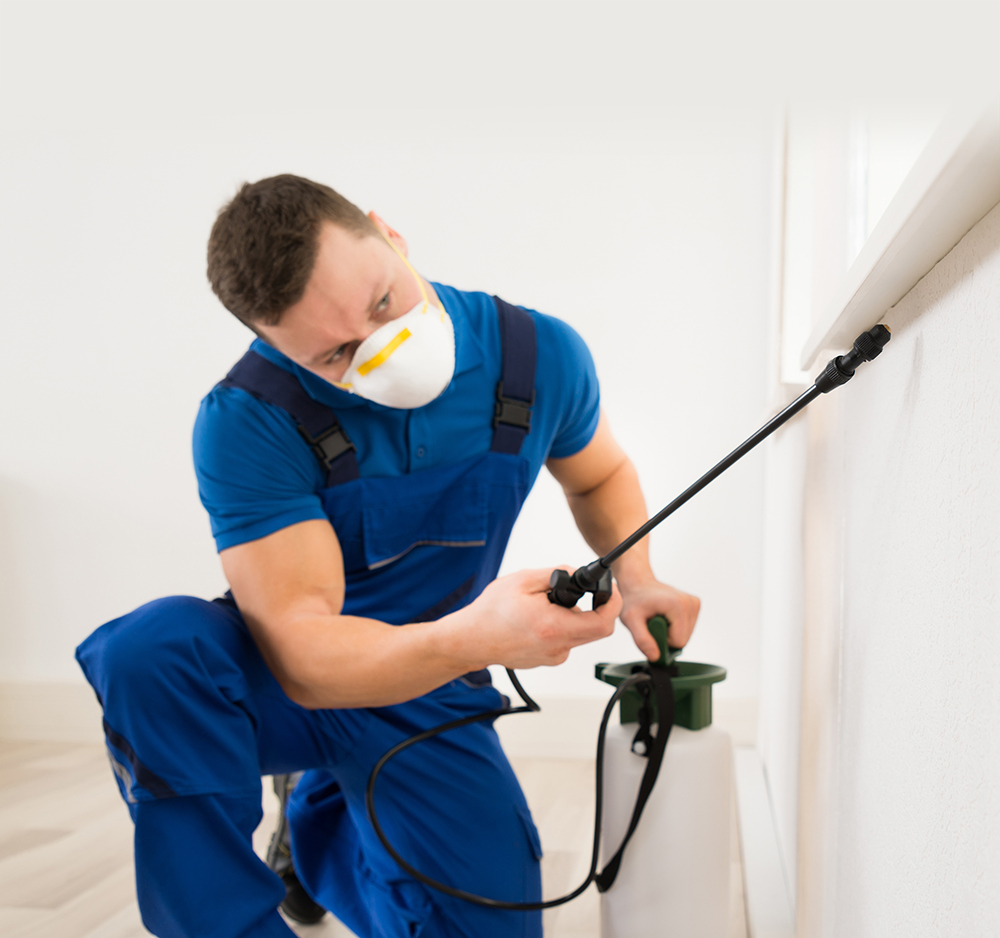Professional Parasite Control Techniques for Long-Term Results
In the realm of parasite control, achieving sustained efficiency and long-term results requires a precise strategy that transcends plain elimination. Professional bug control techniques envelop a detailed approach that begins with a thorough examination and assessment, complied with by exact parasite recognition to recognize their actions patterns. The application of Integrated Insect Monitoring (IPM) principles, coupled with eco-conscious treatments, develops the keystone of sustainable parasite eradication. The real examination exists in the recurring monitoring and maintenance of the dealt with areas, making sure a pest-free atmosphere for the near future. By diving into the ins and outs of these techniques, a deeper understanding of specialist bug control approaches for withstanding results emerges.
Inspection and Evaluation
Upon getting in a property for pest control solutions, the preliminary action is an extensive evaluation and assessment to identify the level of the infestation and determine the most reliable treatment strategy. Professional pest control service technicians are trained to meticulously check out the premises, seeking indications of parasite activity such as droppings, nibble marks, nests, or any kind of structural damages. They will likewise assess the conditions that might be bring in parasites, such as food resources, water leakages, or entry points.

Bug Identification and Behavior

Additionally, understanding the behavior of the determined parasite is crucial to executing reliable control measures. Recognizing where bugs nest, what they feed on, and their task patterns can assist pest control professionals develop techniques to remove them effectively. Some pests might be nocturnal, while others are a lot more energetic during the day. This expertise permits the application of therapies at ideal times for optimum effectiveness.
Integrated Bug Administration (IPM)
Integrated Parasite Monitoring (IPM) techniques combine several strategies to control and avoid insect infestations in a sustainable and eco friendly fashion. pest control. By incorporating techniques such as organic control, habitat manipulation, modification of social techniques, and using resistant selections, IPM intends to decrease the use of chemical pesticides
One of the vital principles of IPM is the focus on prevention. This positive strategy involves surveillance insect populaces regularly to find any type of prospective problems before they escalate. By determining pest issues early, pest control actions can be carried out promptly and successfully.
In addition, IPM promotes making use of safe bug control approaches whenever feasible. This can include using all-natural killers of the parasites, introducing advantageous pests, or utilizing pheromones to interrupt breeding patterns. By decreasing reliance on chemical pesticides, IPM not just shields the environment yet likewise helps maintain an equilibrium in the environment.
Environmentally-Friendly Treatments
Executing eco-conscious approaches in parasite control procedures can properly address infestations while prioritizing environmental sustainability. Environmentally-friendly therapies concentrate on decreasing the effect of pest control techniques on ecosystems, non-target microorganisms, and human health. These techniques usually entail making use of natural killers, such as ladybugs or nematodes, to manage pest populations, decreasing the requirement for chemical interventions. Additionally, methods like habitat manipulation, such as changing wetness degrees or getting rid of food resources, can assist hinder parasites without making use of Source hazardous substances.
An additional key facet of environmentally-friendly treatments is the usage of organic and naturally degradable items that break down rapidly without leaving dangerous deposits in the setting. Organic pesticides originated from plants like chrysanthemums or neem provide efficient insect control while posing marginal danger to non-target species. Furthermore, employing approaches like warm treatments or pheromone catches can target details insects with accuracy, decreasing the overall environmental impact of insect control techniques.
Recurring Surveillance and Upkeep
Continual surveillance and upkeep are necessary parts of reliable bug control monitoring. Recurring surveillance plays a crucial role in making sure that insect problems are found very early and dealt with without delay. Regular examinations by skilled professionals are necessary to determine any signs of pest task, assess the effectiveness of previous treatments, and make changes to the parasite control strategy as needed. By checking bug populations in time, pest control experts can track fads, prepare for prospective problems, and carry out preventative procedures to lessen the risk of future infestations.
In addition to surveillance, maintenance methods are crucial for lasting pest control success. This includes carrying out correct sanitation steps to remove possible food and water sources for insects, sealing entrance factors to protect against pests from entering the facilities, and attending to any structural problems visit our website that might assist in pest invasions (bed bug treatment). By incorporating ongoing monitoring and maintenance into an integrated pest management strategy, companies can guarantee a pest-free atmosphere and protect their building versus pricey damages and health and wellness dangers
Final Thought
Finally, making use of specialist parasite control strategies such as detailed examination and analysis, precise bug recognition and understanding of their habits, incorporated insect management approaches, environmentally-friendly therapies, and ongoing tracking and upkeep are important for attaining long-lasting lead to parasite control. By implementing these approaches, individuals can successfully take care of insect infestations and keep a pest-free environment in a Web Site sustainable fashion.